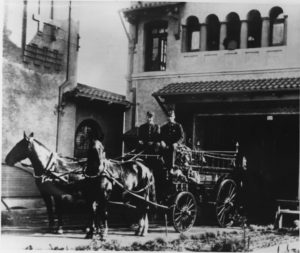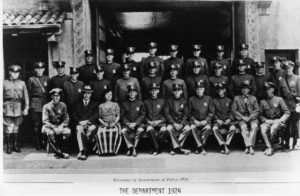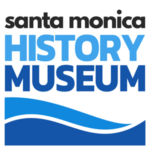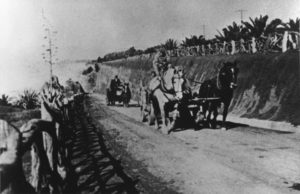Santa Monica History
Jewel of the Sunset Bay
Throughout its history, Santa Monica has been described by many endearing phrases, among them “City by the Sea,” “Pearl of the Pacific,” “City of Inspiration” and “Jewel of the Sunset Bay.”
With an environment of mountains, canyons, rolling hills, valley and ocean, blessed with a delightful all-year climate, industry, commerce and the arts, Santa Monica has its high place in the world. It is a place to live and to enjoy life.
Let’s begin this journey of discovery and exploring its history with its original inhabitants, the Tongva Gabrielino people.
Tongva Gabrielino
San Gabriel Band of Mission Indians
The Gabrieleno San Gabriel Band of Mission Indians (AKA) “Gabrieleno Tongva” is the Historically Traditional Tribe within the County of Los Angeles. The Gabrieleno Tongva occupied the entire Los Angeles Basin and the islands of the Santa Catalina, San Nicholas , San Clemente and Santa Barbara, and from the mountains to the sea.
https://www.gabrieleno-nsn.us/
On display in our permanent exhibition, you may view several artifacts and learn about the history of the Tongva. Our past exhibition, People of the Earth, explored their rich history and culture.
In October 2013, the City of Santa Monica dedicated a beautiful landscape in their honor called Tongva Park, located on Main Street across from city hall.
The Gabrielino Tongva and Chumash people are indigenous to Southern California, inhabiting more than 4000 square miles of land reaching from the Santa Susana Mountains to the North, Aliso Creek in Orange County to the South, San Bernardino Mountains to the East and out to the sea in the West. The Santa Monica History Museum acknowledges the Gabrielino/Tongva peoples as the traditional land caretakers of Tovaangar (Los Angeles basin and south Channel Islands).
In 1542, Juan Rodriquez Cabrillo, Spanish Conquistador dropped anchor in what is thought to be Santa Monica Bay.
In 1769, Spanish explorer Gaspar de Portola was placed in command of an expedition in California. While Portola and his party rested in camp, some of the men hunted for a trail up the Coast. As the story goes it was hot and dusty as the little party walked over the pathless plain. They came to two springs of sparkling water below the shade of great sycamore trees. After drinking the cool water and resting in the shade, the little party agreed that this place should have a name. The day happened to be St. Monica’s day on the religious calendar, May 4; and as the springs reminded them of the tears St. Monica shed for her erring-son, Augustine, they called the area Santa Monica.
In 1822, the land passed from Spanish rule to the Mexican Republic and came under private ownership.
In 1828, Don Francisco Sepulveda was given provisional title to Rancho San Vicente y Santa Monica which included the area between the Santa Monica Canyon and what is now Pico Boulevard and northeasterly into the Westwood region.
In 1839, Ysidro Reyes and Francisco Marquez were provisionally granted the Rancho known as Boca de Santa Monica (Santa Monica Canyon).
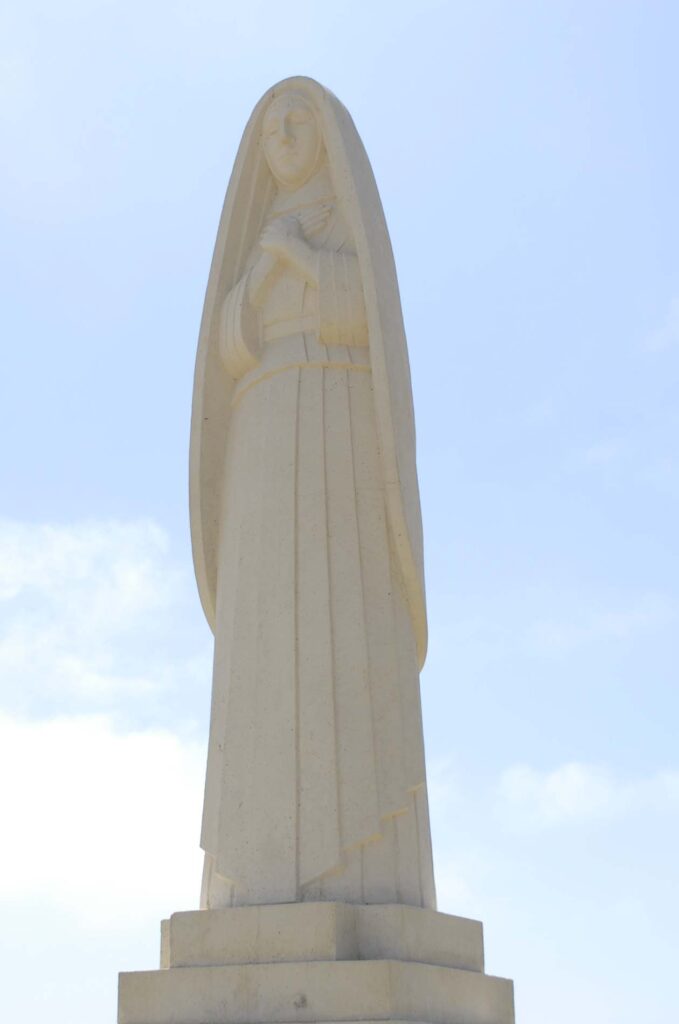
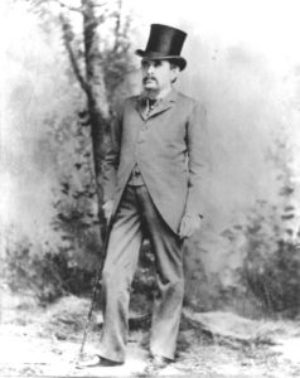
Colonel Robert S. Baker
City Founder
Colonel Baker, originally from Rhode Island, came to California in 1849 during the gold rush, and engaged in business in San Francisco dealing in mining supplies and later, in the Tejon Country, in the cattle and sheep business.
In 1872, Colonel Baker purchased the Rancho San Vicente y Santa Monica from the Don Francisco Sepulveda heirs for $55,000.
He began to talk of a town on the bay and believed that Southern California was sure to grow into a thriving, prosperous region. Colonel Baker knew it would take a great deal of money to make this happen so he tried to interest some eastern capitalists in investing their money.
In 1874, he soon found a partner, a wealthy U.S. Senator by the name of John P. Jones of Nevada. Jones came to California and purchased ¾ interest in Colonel Baker’s ranch for $162,500.
Colonel Baker and Senator Jones began making plans for a town, believing it was going to become the great commercial center of the southwest.
Colonel Baker married Arcadia Bandini Stearns, a widow, in 1874.
He was quiet in his tastes and made no effort to enter into public life, but donated his time to the management of his large interests. He was most congenial in character and he and his wife, Arcadia, were noted for their lavish entertainment of guests and were hosts to many distinguished people.
In 1878, he built the Baker block in Los Angeles, at that time the finest business block in the city.
On July 10, 1875 a town site plot was filed with the county recorder.
On July 15, 1875, the first lots were put on the auction block. The lots sold for $500.00 and $75.00. Tom Fitch, the auctioneer made an eloquent speech which made a great impression on the bidders.
“At one o’clock we will sell at public outcry to the highest bidder the Pacific Ocean, draped with a western sky of scarlet and gold; we will sell a bay filled with white winged ships; we will sell a southern horizon, rimmed with a choice collection of purple mountains carved in castles and turrets and domes; we will sell a frostless, bracing, warm yet unlangured air braided in and out with sunshine and odored with the breath of flowers.”
– Tom Finch, auctioneer
Listening to the speeches, the people became anxious to own a lot in the new town. They forgot the dusty barren plain. Within a few weeks after the town lot sale a change had come over the barren plain. Houses and stores sprang up, a general store was opened and a newspaper started. Although some of Colonel Baker and Senator Jones dreams materialized, they were disappointed that the harbor at Santa Monica was not the one chosen by Los Angeles for the Los Angeles Port, and that Santa Monica was not a commercial city. In later years the residents were glad that the beautiful bay and mountain country did not become an industrial or commercial region.
The city electorate went to the polls in November 1886 and voted 97 to 71 to incorporate Santa Monica.
Colonel Baker died in May, 1894.
In 1905, the town had a population of 7,208.
By the 1920s, the population was growing rapidly. The Ocean Park and Venice pleasure piers drew huge crowds, as did the Looff Pier (Santa Monica Pier). The northern area of Santa Monica had become a renowned resort for the rich and famous, many lived along the “Gold Coast.” There were numerous sports enthusiasts.
From 1909 to 1919, thrilling road races that began on Ocean Avenue were watched by thousands of people. This and tennis put Santa Monica in the national limelight.
In 1924, the first round-the-world flight was made in Donald Douglas built World Cruisers. The flight put Santa Monica on the map.
Santa Monica struggled during the 1930s Depression and the 1940s war years. The late 1940s and 1950s were prosperous years for the city. Its population soared to more than 83,000.
From its very beginning, Santa Monica has been world renowned as a place of leisure, tourism, scenic splendor and year-round fun.
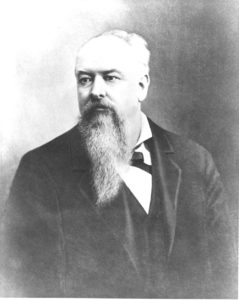
John P. Jones
U.S. Senator and Co-Founder of Santa Monica
Arcadia Bandini de Baker
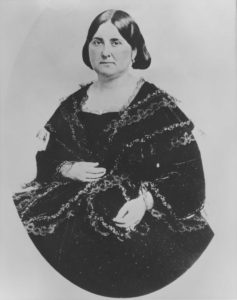
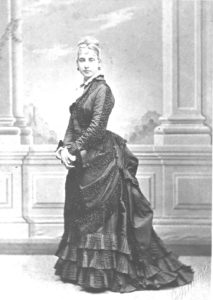
Georgina Jones
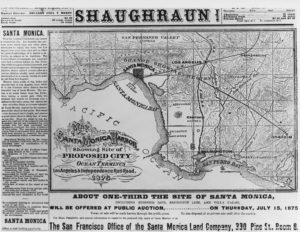
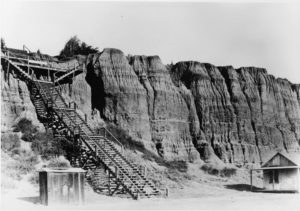
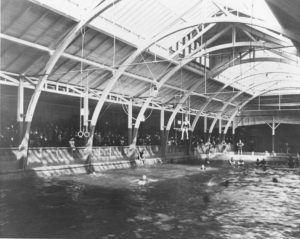
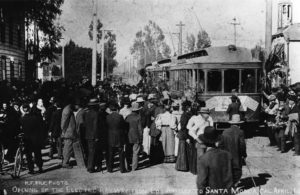
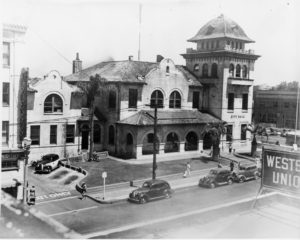
The old City Hall, located at Santa Monica Boulevard and Fourth Street, served the city from 1902 to 1938. It also housed the Police Department. Today’s City Hall at 1685 Main Street replaced this earlier structure in 1939. This picture shows the department in 1909.
Juan J. Carrillo, first judge, mayor and city trustee of Santa Monica for many years. He did much in the early days to lay the foundation upon which the city of today was developed. Archives of the Carrillo family.
